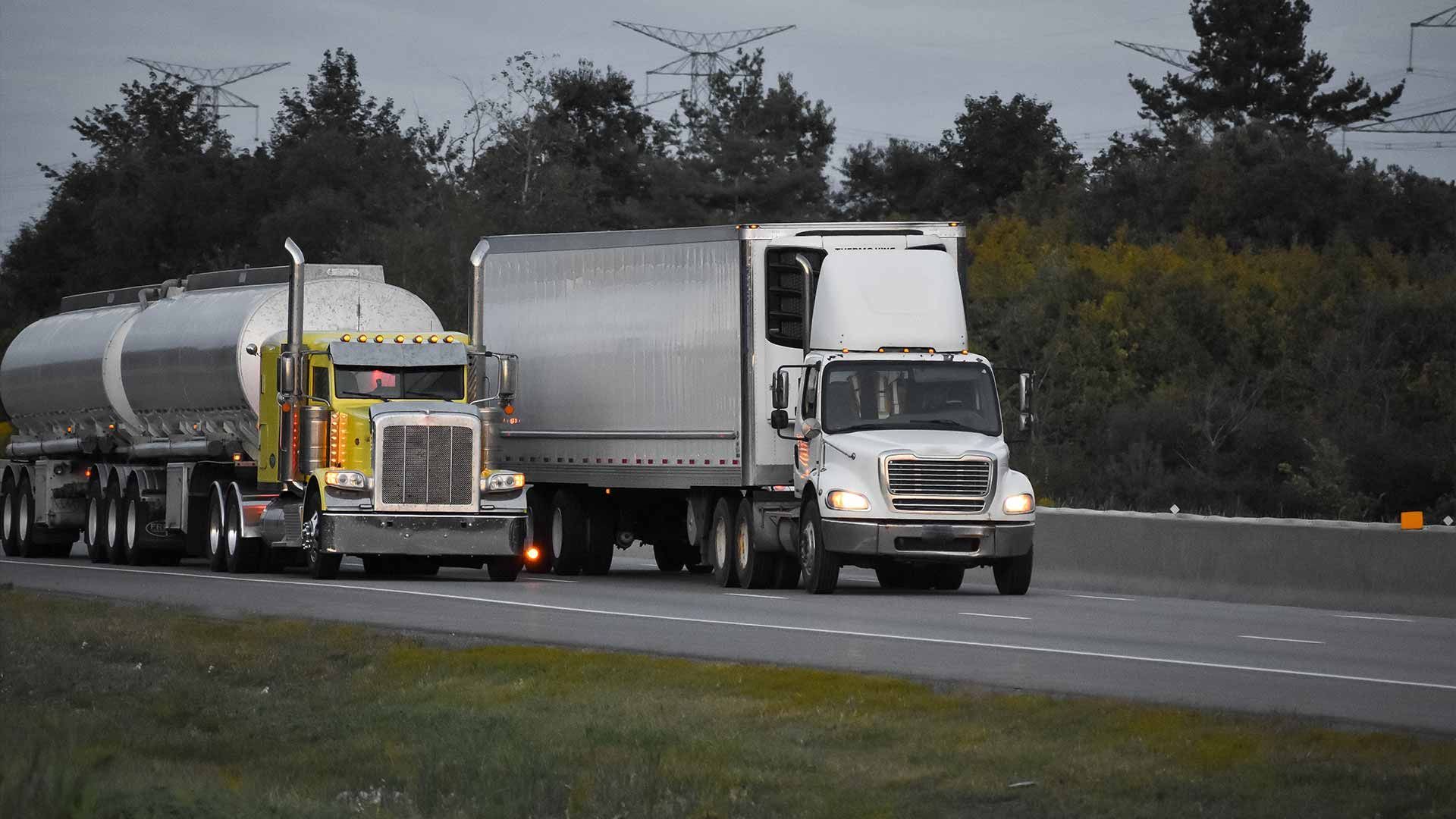Efficiency in Freight Transport: Strategies for Optimizing Your Supply Chain
In today's fast-paced business world, efficient freight transport plays a pivotal role in the success of supply chains. Whether you're a manufacturer, retailer, or distributor, the way goods move from one point to another can significantly impact your operations and bottom line. As businesses strive to meet customer demands for faster deliveries and cost-effective logistics, optimizing your supply chain becomes more critical than ever.
This article delves into the world of freight transport and explores strategies to streamline your supply chain, reduce costs, and enhance overall efficiency. We'll uncover the key components of an efficient supply chain, the role of freight transport within it, and practical strategies that can help your business thrive in a competitive marketplace. By the end, you'll have a clearer understanding of how to make your
supply chain a well-oiled machine, ensuring timely deliveries, satisfied customers, and improved profitability.
Understanding Your Supply Chain
In the world of business, supply chains are the intricate web of activities and processes that transform raw materials into finished products and deliver them to customers. Understanding your supply chain is the first step in optimizing it.
At its core, a supply chain encompasses everything from sourcing materials to manufacturing, warehousing, distribution, and finally, the delivery of products to customers. Each of these components is interdependent, and any inefficiency in one area can ripple through the entire chain.
By comprehending how your supply chain operates, you gain insight into where bottlenecks may occur, where costs are incurred, and where improvements can be made. This understanding allows you to make informed decisions when implementing strategies for optimizing freight transport within your supply chain. As we explore these strategies in this article, keep in mind that a well-informed approach to your supply chain can lead to substantial improvements in efficiency and profitability.
The Role of Freight Transport in Supply Chain Efficiency
Within the intricate tapestry of supply chains, freight transport stands as a vital thread that connects various components and ensures the smooth flow of goods. It is the process that bridges the gap between production facilities, distribution centers, and ultimately, the hands of customers.
Effective freight transport is not merely about moving goods from point A to point B; it's about doing so efficiently, reliably, and cost-effectively. The manner in which products are transported can significantly impact delivery times, operational costs, and customer satisfaction.
In essence, freight transport is the heartbeat of a supply chain. It's responsible for delivering products on time, optimizing routes, minimizing transit times, and mitigating disruptions. Whether by road, rail, air, or sea, choosing the right transport mode and logistics partner can make all the difference in achieving supply chain efficiency.
As we delve deeper into this article, we'll explore various strategies and approaches that can help you harness the full potential of
freight transport within your supply chain, leading to smoother operations and improved outcomes.
Strategies for Optimizing Freight Transport
In the pursuit of supply chain efficiency, businesses must adopt various strategies to optimize freight transport. These strategies are essential for streamlining the movement of goods, reducing costs, and ensuring timely deliveries. Here, we'll explore some of the key strategies that can make a significant difference in your logistics operations:
1. Route Optimization: Utilizing advanced routing software and real-time data, businesses can identify the most efficient routes for shipments. This reduces transit times, minimizes fuel consumption, and lowers transportation costs.
2. Inventory Management: Maintaining an optimal level of inventory is crucial. Too much stock ties up capital, while too little can lead to delays. Implementing inventory management practices can strike the right balance.
3. Carrier Selection and Negotiation: Choosing the right carriers and negotiating favorable terms can result in cost savings and improved service. Consider factors such as carrier reliability, rates, and service offerings.
4. Technology Adoption: Embracing technology, such as tracking systems and data analytics, enhances visibility into your supply chain. This enables better decision-making and the ability to proactively address issues.
5. Sustainability Initiatives: Implementing eco-friendly practices not only reduces your carbon footprint but can also lead to cost savings. This includes using fuel-efficient vehicles and exploring alternative energy sources.
As we delve deeper into each of these strategies, you'll gain a comprehensive understanding of how to optimize freight transport within your supply chain, ultimately leading to increased efficiency and competitiveness.
Common Challenges and How to Overcome Them
While optimizing freight transport within your supply chain is crucial, it's essential to be aware of the common challenges that can arise during the process. By identifying these challenges and knowing how to overcome them, you can navigate potential roadblocks effectively. Some of the common challenges include:
1. Supply Chain Disruptions: Unforeseen events like natural disasters or global crises can disrupt supply chains. Learn how to create contingency plans and build resilience into your logistics operations.
2. Cost Management: Balancing cost reduction with service quality can be challenging. Explore cost-saving strategies without compromising the quality of your freight transport services.
3. Regulatory Compliance: Navigating complex regulations and compliance requirements, especially in international shipping, can be daunting. Discover how to stay compliant while avoiding potential pitfalls.
4. Technology Integration: Implementing new technology solutions can be met with resistance or technical challenges. Find ways to effectively integrate technology into your logistics processes.
5. Sustainability Initiatives: While sustainability is essential, it can present challenges in terms of initial investments and changing processes. Learn how to gradually implement sustainability practices without disrupting operations.
By understanding these challenges and having strategies in place to address them, you can proactively manage potential issues that may arise as you optimize your supply chain and freight
transport operations.
The Human Element: Employee Training and Collaboration
Efficient freight transport and supply chain optimization go beyond technologies and strategies; they also involve the people who drive these processes. In this section, we'll explore the significance of employee training and collaboration within your organization:
1. Employee Training: Well-trained employees are the linchpin of a successful supply chain. Discuss the importance of providing ongoing training to your logistics and transport teams. Highlight how this enhances their skills, decision-making abilities, and adaptability to new technologies.
2. Cross-Functional Collaboration: Collaboration among various departments, such as procurement, logistics, and customer service, is essential for smooth supply chain operations. Emphasize the benefits of breaking down silos and fostering teamwork to improve efficiency.
3. Communication: Effective communication is critical in supply chain optimization. Explore the role of clear communication channels, from sharing data and updates to addressing issues promptly.
4. Problem-Solving Skills: Equip your teams with problem-solving skills to handle unexpected challenges efficiently. Discuss how fostering a problem-solving culture can lead to quicker resolutions and reduced disruptions.
By recognizing the significance of the human element in supply chain optimization and promoting a culture of continuous learning and collaboration, businesses can achieve greater efficiency and adaptability in their freight transport operations.
Continuous Improvement and Adaptation
In the dynamic world of freight transport and supply chain management, the pursuit of efficiency is an ongoing journey. In this section, we'll explore the concept of continuous improvement and adaptation:
1. Kaizen Philosophy: Introduce the Kaizen philosophy, which emphasizes continuous improvement in small, incremental steps. Discuss how adopting this philosophy can lead to a culture of constant optimization.
2. Feedback Loops: Explain the importance of feedback loops within your supply chain. Encourage businesses to seek feedback from employees, customers, and partners, and then use this feedback to drive improvements.
3. Adaptation to Change: Highlight the necessity of being agile and adaptable in the face of change. Explore how businesses can respond to market shifts, technological advancements, and evolving customer demands.
4. Benchmarking and Best Practices: Encourage businesses to benchmark their performance against industry best practices and competitors. Discuss the benefits of learning from others and adopting proven strategies.
By emphasizing the value of continuous improvement and adaptation, businesses can stay ahead in the ever-changing landscape of freight transport and supply chain management, ensuring long-term success and competitiveness.
Conclusion
In the realm of modern business, the optimization of freight transport within your supply chain is not just a choice; it's a necessity for thriving in a competitive landscape. This journey towards efficiency requires a holistic approach, encompassing strategies, technology, collaboration, and a commitment to continuous improvement.
As you embark on the path to supply chain optimization, remember that every step taken towards improving your freight transport operations contributes to your overall success. Whether it's reducing costs, enhancing delivery times, or adopting sustainable practices, each effort is a building block in the construction of a more efficient and competitive business.
At
Texas Panhandle Logistics LLC, we understand the significance of efficient freight transport and supply chain optimization. Our team is dedicated to helping businesses like yours achieve their logistics goals. For personalized solutions and expert guidance, contact us at
806-240-5206. Let us be your partner in optimizing your supply chain and ensuring the efficient movement of goods.
Your journey to a more streamlined and cost-effective supply chain starts here.
FAQs












